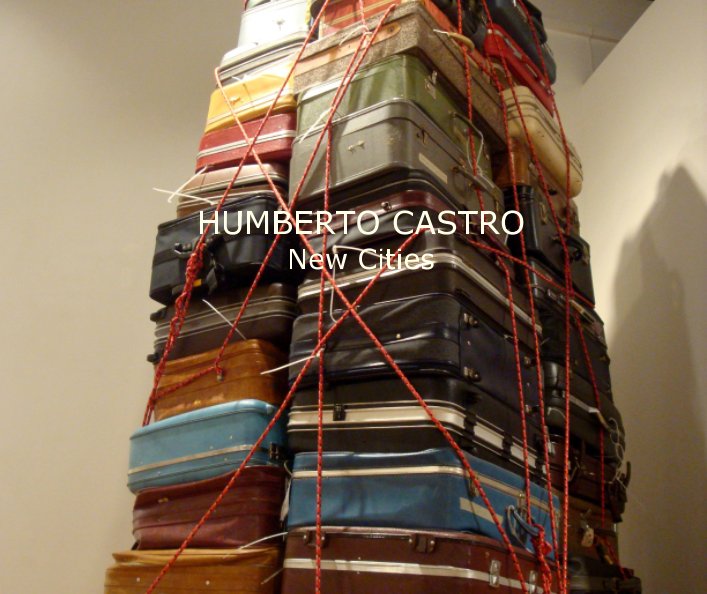HUMBERTO CASTRO New Cities
Humberto Castro New Cities
by Humberto Castro
This is the price your customers see. Edit list price
About the Book
by Allen Sheppard
In Humberto Castro's first solo exhibition in New York, "New Cities" he uses the mundane suitcase
in his paintings as a symbolic vehicle for man's transformation of the world through continuous immigration. As a Cuban artist who has sought refuge in France, New York and Miami to create art,
he has a personal understanding of the experience of immigration to realize one's dreams.
Upon close inspection of the rich and textural surfaces of his paintings the viewer may notice strands
of gold embedded in the paint. This has special significance in the artist's long view of human history
as symbolic of an endless quest for gold, for livelihood. Yet the image of these traveling containers dominate this series. Containers of all sorts have been used to cart belongings from continent to
continent – the suitcase embodies this central theme. These engaging paintings informed by the flow
of humanity creates a compelling visual that suggests the integration of cultures, the promise of
riches and intertwining of world views endlessly spilling, in odd patterns across the globe.
His paintings utilizes his suitcases as building blocks for the various structures he portrays. For, in
fact, these modern containers have carried the content of human being that have built new
transformative lives across the globe.
Features & Details
- Primary Category: Arts & Photography Books
-
Project Option: Standard Landscape, 10×8 in, 25×20 cm
# of Pages: 78 - Publish Date: Dec 11, 2016
- Language English
- Keywords Humberto Castro, new cities, Art, Literature, paintings, boks
About the Creator
Humberto Castro was born in Havana, Cuba, on July 9, 1957. He graduated from the Academy of Fine Arts San Alejandro and Instituto Superior de Arte (ISA) in Havana, Cuba. He works in painting, drawing, printmaking, ceramics and installations. He is one of the most active members of the group widely recognized as the “Generation of the 80s” in Cuba, which generated changes in the aesthetic and conceptual art scene of the island. In 1983 he founded the team Hexagon in which, alongside other artists, he mounted installations aimed at provoking public participation in the work. Between 1980 and 1984 he produces an extensive body of graphics, particularly innovating in the intaglio technique. He has designed sets for theater and film in Cuba. In 1989 he emigrated to Paris, France, where he lived for ten years and became active in the Parisian intellectual scene, holding exhibitions and giving conferences across Europe. In 1999 he moved to the United States, where he lives and works.


